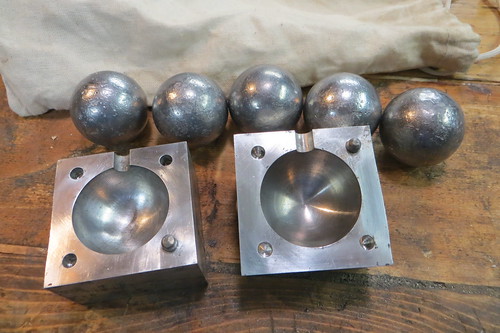I've never made one, but the idea of making your own has been around for a long time.
The Pennsylvania Gazette
January 5, 1748
From the GENERAL MAGAZINE.
A New Method of making BULLET MOULDS.
"THE Badness of the Bullet Moulds brought into America for common Sale, and the Difficulty of meeting with one of them, bad as they are, that will fit one's Gun , will render the following Invention, for making (easily) true and exact Bullet Moulds, agreeable to all Lovers of good Shooting. First provide yourself with two Pieces of Lead about an Inch and Half, or two Inches Square, and half as thick, and smooth their Faces, so that when joined they may make near a Cube; then get some Marbles (such as Boys play with) from the smallest to the Size that fits your Gun, oyl or grease the Marbles and Lead well; and with the Assistance of a Smith's Vyce, with two flat Pieces of Iron in the Chaps of it, press the two Pieces of Lead with the smallest Marble between, till the Marble be quite sank in the Lead; then put in the next greater, always remembering to keep the Lead and Marbles well oyl'd do thus successively, till you have brought it to the Size you want: And, to prevent the Bullets having Edges, smooth the Faces of the Mould, and press in the same Marbles several Times, by which Means you may make Moulds of wonderful Exactness. Then cut a Gate and fit the Corner with Pins, to keep the Pieces in a proper Position for casting. When you use it, smoke it well, and take Care the melted Lead be not so hot as to burn Paper."
In an earlier discussion of this idea a TMF member made one, and it worked.
Spence




 IMG_1087
IMG_1087


